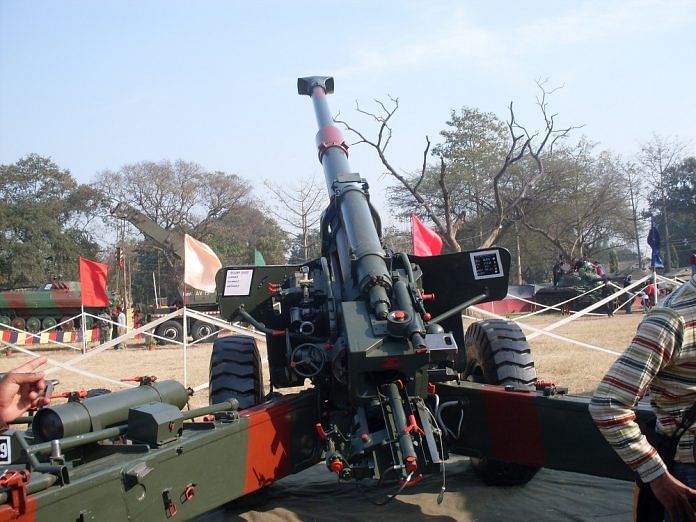New Delhi: Amid the ongoing tensions with China in Eastern Ladakh, the Panagarh (West Bengal)-based Mountain Strike Corps (MSC) is set to get its own artillery brigade, ThePrint has learnt.
An artillery brigade is already attached to the Mountain Strike Corps’ only division but the new brigade will be attached to the Corps.
In military parlance, a division is typically constituted of three brigades, which usually consist of armoured, infantry and artillery units besides other elements. Two or more divisions then make up a corps.
Sources in the defence and security establishment said work has already started on raising the new artillery brigade, which will see larger deployment of the Ultra Light Howitzers besides other guns.
Although the grand plans of a full-fledged Mountain Strike Corps, which would have involved over 90,000 troops and expenditure of over Rs 64,000 crore across an eight-year period, was put on a back burner in 2016 due to budgetary constraints, the ongoing Ladakh conflict has shown how useful they can be, sources said.
The Mountain Strike Corps has only one division as of now. Sources, however, said there was no progress in the potential raising of another division, which is meant to be based in Pathankot.
The developments come even as the Army is reportedly looking at converting some of its fighting formations into dual-tasked ones, which would allow them to fight against both China and Pakistan.
Also read: China supplying arms, providing hideouts to northeast militants via Myanmar, India alleges
A critical component in mountain warfare
Sources said the new artillery brigade with the corps would be useful as the infantry, artillery and Air Force are critical for mountain warfare.
“The armoured elements in the heights are possible in Ladakh and some areas of Sikkim but not in the rest of the terrain. Air Power is essential but it is dependent on weather. The only thing available to act as a punisher round the clock in the mountains are the artillery,” a source said, while explaining why the guns were important.
Sources explained that while in the plains, 1:3 is the ratio needed for an offensive infantry operation, it increases to 1:9 in the mountains.
“So to counter one enemy in the heights, you would need nine of our own for offence. The dynamics of mountain warfare is very different,” said a second source.
The Mountain Strike Corps
Although originally envisaged way back in 2000, the Mountain Strike Corps was finally sanctioned only in 2013. However, the raising of the new corps, which was to be manpower- and equipment-intensive, hit a financial roadblock.
While the corps was supposed to have two divisions instead of the regular three, only the Panagarh-based 51 Division was raised.
Plans for raising of the second division were put on hold due to a paucity of funds. It was then thought that the MSC can be divided into Integrated Battle Groups (IBGs), a new concept brought in by then Army Chief Gen. Bipin Rawat.
The Mountain Strike Corps, also known as the 17 Corps, debuted last year in the massive exercise called “HimVijay”, which also saw the IBGs concept in action.
Also read: How Army’s artillery modernisation plan, stuck in a rut after Bofors, is picking up pace







Great targets for PLA drones practice. Without air space control, all IA armoured and artillery are sitting ducks. Also chronic lacking of stockpile and supply capability will see ammunition depleted within days in war. How can a poor antique IA win a mighty dragon 6x its GDP with most modern military that USM fear? Excessive ambitious India Chanakya expansionism under 56″ feku has picked the wrong enemy for self suicide.
Amazing! At this rate India may even give a strike corps an air arm for offense and defense in the distant future! And in an even more distant future, a strike corps may start resembling one!